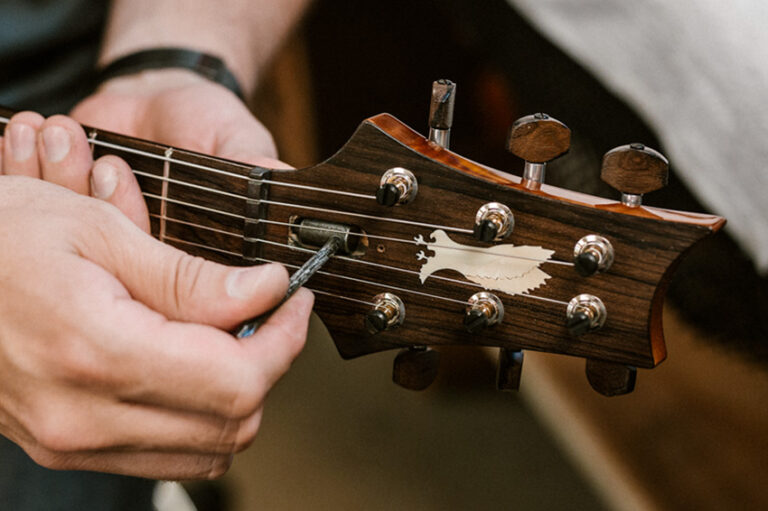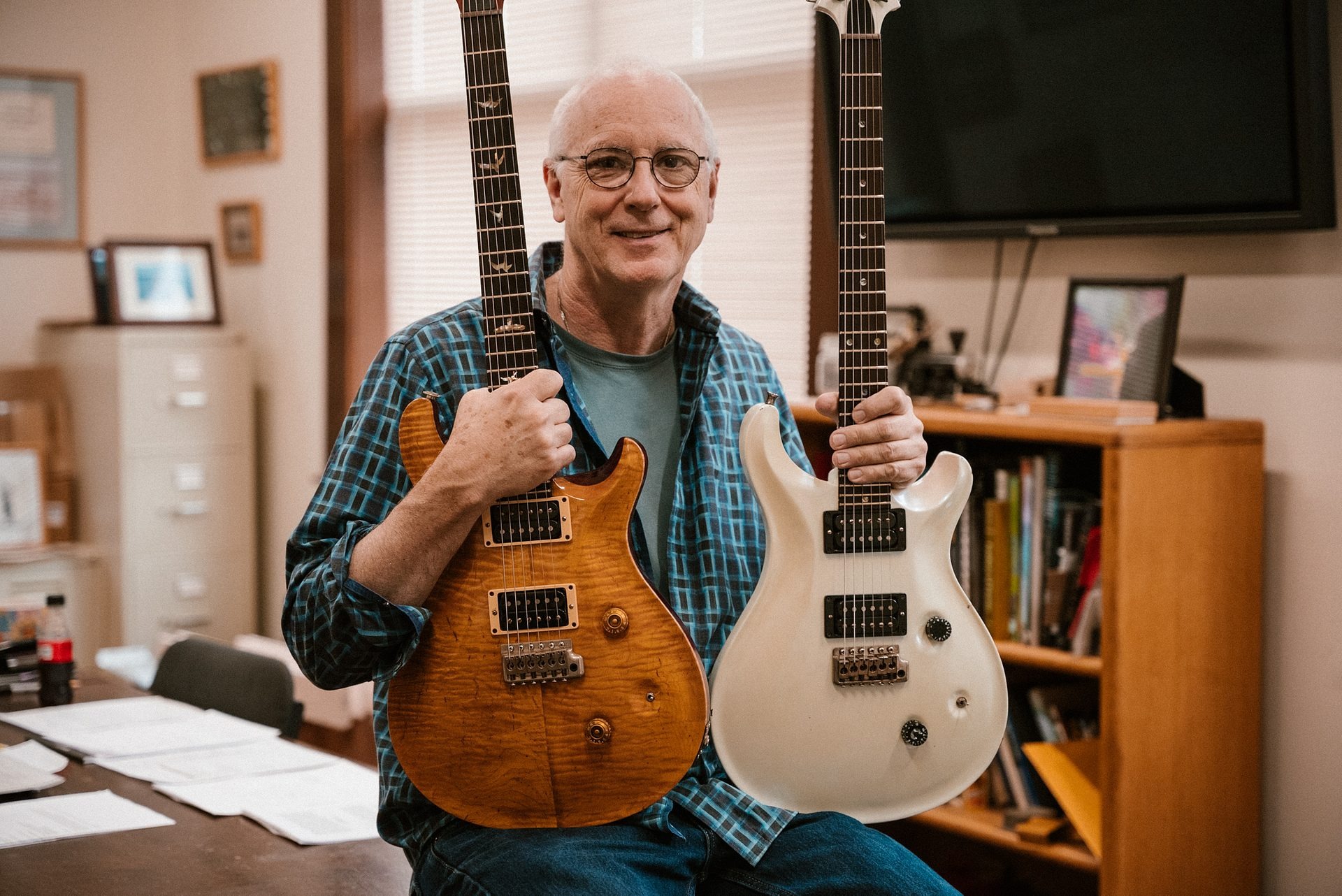Ever wonder what it takes to create the neck of a PRS guitar? If you’ve ever held one in your hands, you know how important that neck is—it’s the connection between you and the music you make. In this blog post, we’ll take you behind the scenes at PRS Guitars, where we’ll walk you through the step-by-step process of crafting a guitar neck, straight from the factory floor. Ryan Whaley, the 2nd Shift Woodshop Manager at PRS, gives us the full tour, showing how raw wood transforms into a finely crafted neck, ready to be played.
The Journey Begins: Rough Cut and Preparation
The process starts in the rough cut area, where large shipments of wood arrive and are cut down into neck blanks. These rough pieces are then placed in a hot room for a few days. The heat helps stabilize the wood by removing moisture, which is crucial for ensuring that the neck remains stable over time. Once they’ve had a good bake, the blanks are ready to move onto the factory floor for the next steps.The next stop is prepping the blanks for the CNC (Computer Numerical Control) machine. A skilled worker like Herman, who has years of experience, carefully marks the wood for relief cuts that will later become the “ears” of the headstock. This attention to detail ensures that the wood grain and color match perfectly, resulting in a cohesive, beautiful finish. The blanks are then stacked and labeled, ready for the precise work of the CNC machine.
Precision Meets Craftsmanship: CNC Cutting and Truss Rod Installation
The neck blanks are now ready for their first run through the CNC machine. This high-tech equipment is used to fly-cut and level the top of the neck blanks, carve out the truss rod channel, and start shaping the headstock. It’s here that the neck starts to take on its familiar shape, with each pass of the CNC adding more detail.Once the truss rod channel is carved, it’s time to install the truss rod—a crucial component that allows for adjustment of the neck’s curvature, ensuring optimal playability. Brian, another seasoned PRS team member, meticulously checks each truss rod channel for cleanliness before fitting the truss rods. This careful inspection is key because any debris or unevenness could impact the neck’s performance. After inserting the truss rods, the necks are pressed to ensure a secure fit, then left to dry for a few hours.
Bringing It All Together: Ear Installation and Further CNC Work
After the truss rods are installed and the necks have dried, the next step is attaching the “ears” to the headstock. These are the pieces that extend the width of the headstock, and they need to be perfectly matched in grain and color to the rest of the neck. The ears are hand-clamped and left to dry overnight, ensuring a seamless look.With the ears in place, the necks go through another round of CNC work. This stage involves refining the headstock shape and drilling the holes for the tuning pegs. The CNC machine also trims and shapes the back of the neck, gradually bringing it closer to its final form.


